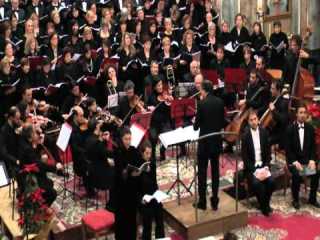Mozart – Vesperae Solennes de Confessore K339 (2008)
Mozart – Vesperae Solennes de Confessore K339 (2008)

1. Vesperae Solennes Malin Hartelius (soprano) Wilke te Brummelstroete (alto) Jörg Dürmüller (tenor) Ruben Drole (baas) Nederlands Kamerkoor & Koninklijk Concertgebouworkest Ton Koopman (conductor) Concertgebouw Amsterdam 22.IV.2007 FM-broadcast Radio 4 (NL) 29.V.2008
Famed for the beauty of its solo soprano aria Laudate Dominum (Psalm 116), the Vesperae solennes de confessore is the second of two settings of the early evening Vespers service composed by Mozart for liturgical use in Salzburg Cathedral. Both date from shortly after the composer returned from the abortive trip to Paris which witnessed the death of his mother, a period which also saw the composition of two important masses, "Coronation" Mass, K. 317, and the Mass in C, K. 337. The first, the Vesperae solennes de Dominica in C, K. 321 dates from 1779, the present work from 1780. Like its predecessor, K. 339 follows the standard Catholic liturgy in including the Magnificat and the five psalms utilized in the Vespers service. In addition to the concluding Laudate Dominum they are as follows: Dixit Dominus (Ps. 109), Confitebur tibi (Ps. 110), Beatus vir (Ps. 111), and Laudate pueri (Ps. 112). In liturgical context, the Magnificat and each of the psalms were prefaced and followed by a plainsong antiphon. The two settings are identically scored for soprano, alto, tenor, and bass soloists and chorus, with an orchestration including bassoon, two trumpets, three trombones, strings, and organ.
The addition "de confessore" (not Mozart's own) suggests that the work may have been employed for a saint's day, although no specific connection has been established. "Solennes," incidentally, simply indicates that the work has orchestral accompaniment. As in the earlier setting, Mozart composed some of his boldest Salzburg church music in the first three psalms, while Laudate pueri, like the parallel movement in K. 321, is an exercise in strict, old-fashioned counterpoint, a movement in total contrast to the tranquil radiant beauty of Laudate Dominum. Here Mozart does vary from K. 321 in allowing the choir to steal in quietly halfway through. More than in the Salzburg masses, the two Vespers settings reveal a personal side of Mozart's approach to sacred music. To Alfred Einstein, "anyone who does not know such settings does not know Mozart." Two years after Mozart settled in Vienna in 1781, he wrote to ask his father to send the two Vespers settings to him in order that he could perform them to Baron van Swieten, the eccentric nobleman who had introduced him to the works of Bach and Handel. --- Brian Robins, Rovi
download: uploaded yandex 4shared mediafire solidfiles mega zalivalka filecloudio anonfiles oboom








